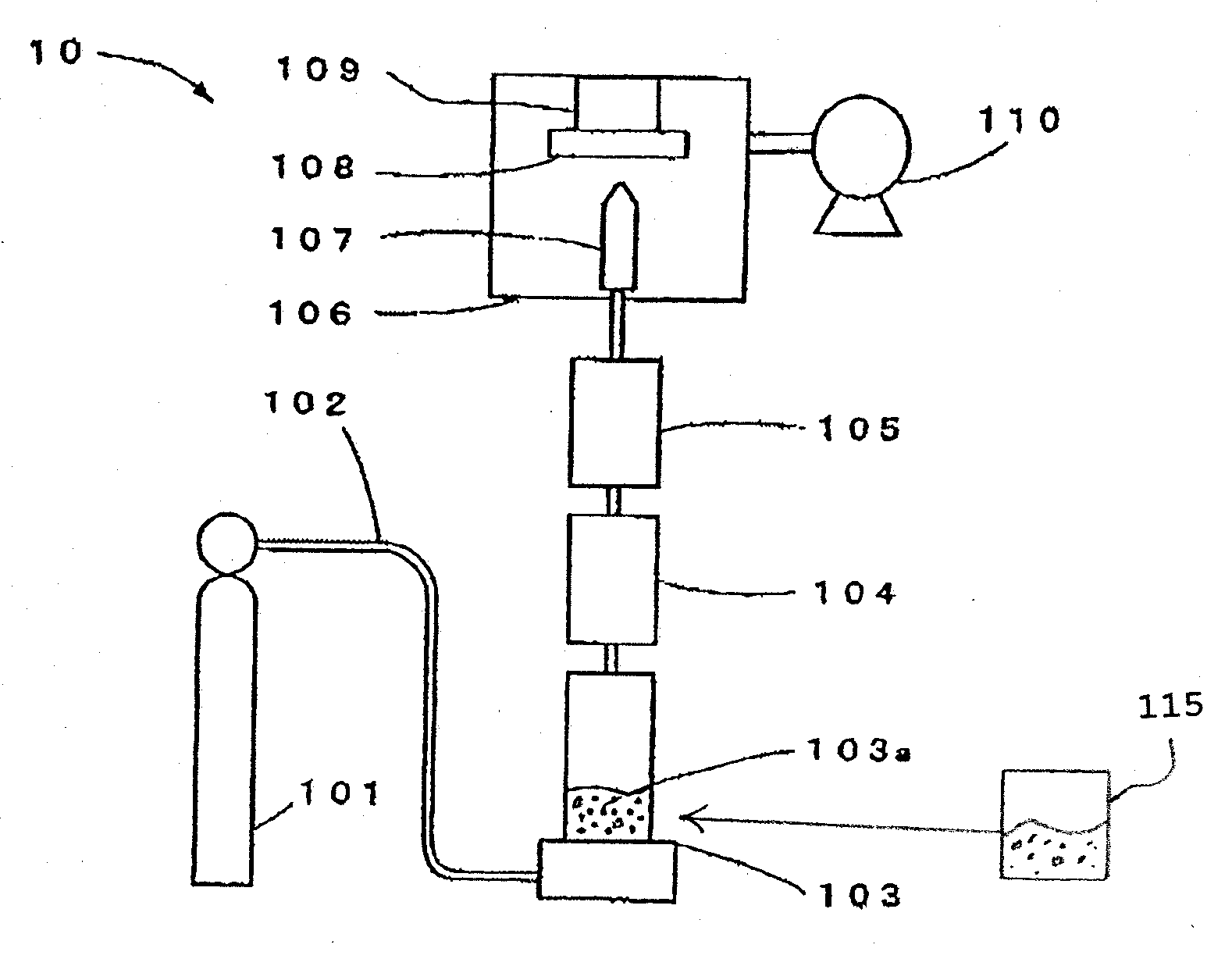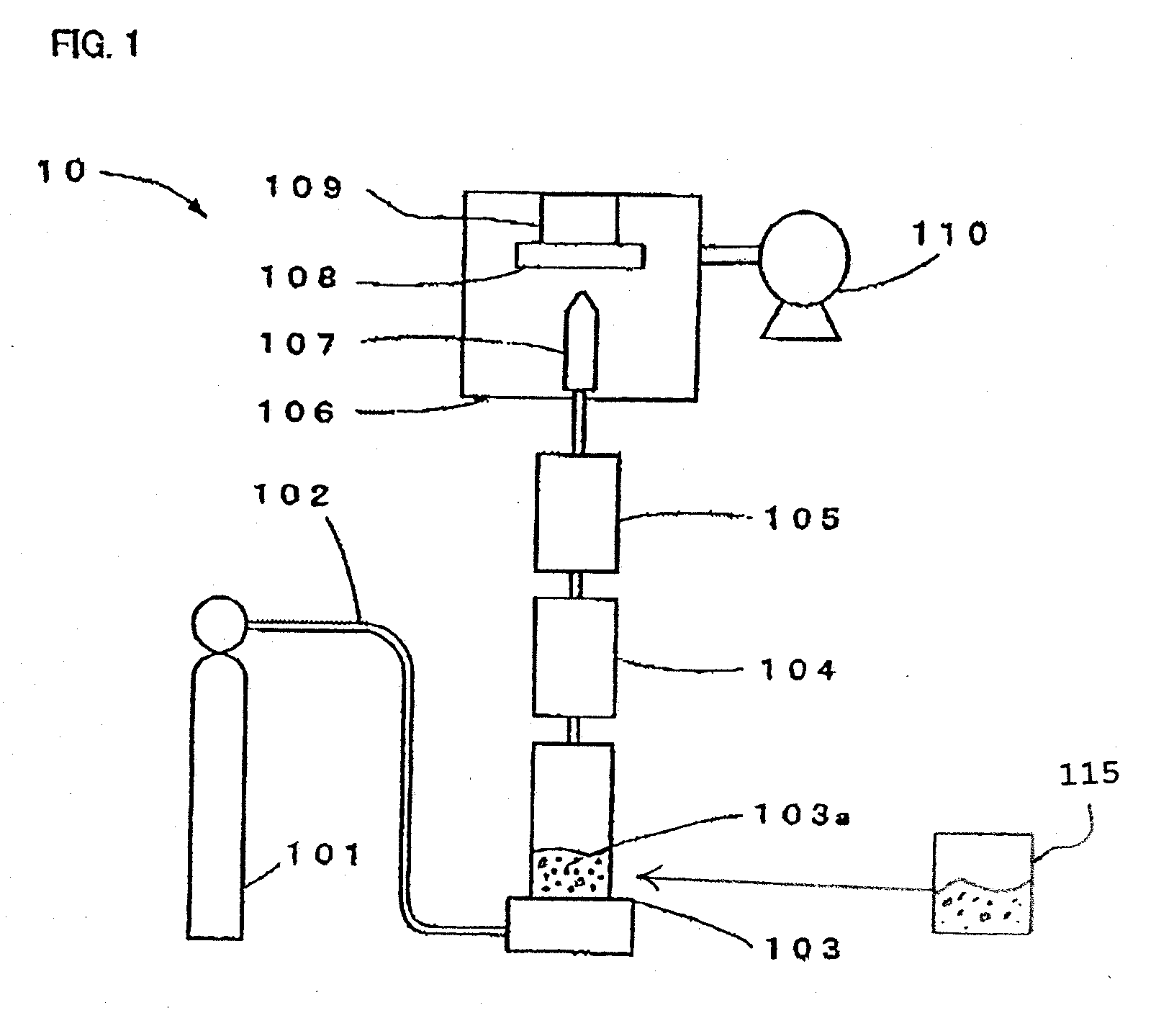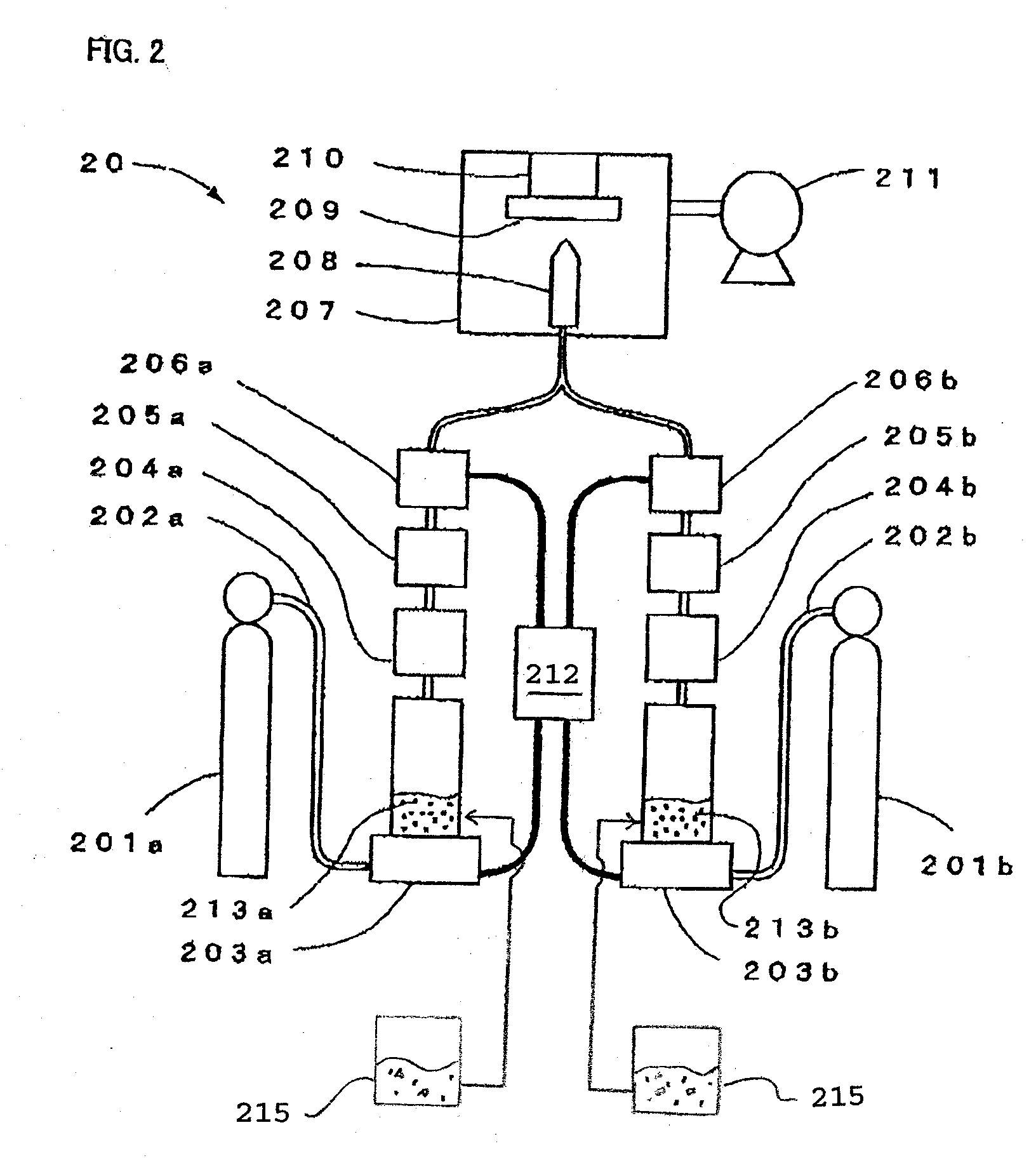Composite structure body and method and apparatus for manufacturing thereof
a technology of composite materials and structures, applied in the direction of coatings, transportation and packaging, natural mineral layered products, etc., can solve the problems of low melting point materials that cannot be directly coated with nanocomposite materials, degradation of freedom, coarse and large particles, etc., to achieve the effect of hardly inducing fracture or distortion, low melting point, and degrading structure body formation efficiency
- Summary
- Abstract
- Description
- Claims
- Application Information
AI Technical Summary
Benefits of technology
Problems solved by technology
Method used
Image
Examples
example 1
[0085] There was prepared beforehand the mixed powder composed of the aluminum oxide fine particle powder of 0.4 μm in average particle size with the distortion imparted by a planetary mill and the silicon oxide fine particle powder of 0.5 μm in average particle size with the distortion similarly imparted by a planetary mill, and with this powder, a dense composite structure body was formed on an iron substrate by means of the ultra-fine particles beam deposition method, in which structure body the elemental ratio between aluminum and silicon was 75% vs. 25%. The used apparatus corresponded to the one shown in FIG. 1. FIG. 3 shows the structure body surface SEM photograph taken immediately after the formation. FIG. 4 shows the results of the element distribution of aluminum, silicon, and oxygen in this location measured by an EPMA. In these results, the crystallites of 100 nm or less are dispersed independently with no orientation condition, and no solid solution layer composed of a...
example 2
[0086] A composite structure body was formed on a SUS304 substrate at room temperature with the mixed powder composed of aluminum oxide (50 wt %) and lead titanate zirconate (PZT) (50 wt %) by means of the ultra-fine particles beam deposition method in the present invention. FIG. 5 shows the result of the D-E hysteresis measurement of the structure body.
[0087] The measurement specimen was prepared as follows: for the purpose of the D-E characteristic measurement, the surface of the structure body was polished to a thickness of 18 μm on a glass plate with a diamond paste of 1 μm in particle size, the surface was washed and dried, a gold electrode was formed on the upper surface of the structure body in a size of φ5 mm by the vacuum deposition method, and the structure body underwent a heating processing for one hour at 600° C. in the air atmosphere to make the measurement specimen. Incidentally, for the purpose of comparative consideration of the physical properties of the aluminum ...
example 3
[0090] In a manner similar to that in Example 2, a composite structure body was manufactured at room temperature on a SUS 304 substrate with the mixed powder composed of aluminum oxide (80 wt %) and PZT (20 wt %). FIG. 8 shows the transmission electron microscope (TEM) observation image of the obtained structure body. From the EDX element analysis, it has been revealed that in the photograph, the white grain shows the aluminum oxide and the black grain shows the PZT. From these results, it was found that the composite structure body manufactured by the aerosol deposition method, which constitutes the present invention, was formed with the two phases coexisting due to no occurrence of the reaction between aluminum oxide and PZT. Incidentally, the results of the TEM observations revealed that the aluminum oxide fine particles and the PZT fine particles were reduced in particle size in such a way that, in either type of particles, the raw particle size ranged from 0.6 to 0.8 μm at the ...
PUM
| Property | Measurement | Unit |
|---|---|---|
| particle size | aaaaa | aaaaa |
| size | aaaaa | aaaaa |
| crystallite size | aaaaa | aaaaa |
Abstract
Description
Claims
Application Information
 Login to View More
Login to View More - R&D
- Intellectual Property
- Life Sciences
- Materials
- Tech Scout
- Unparalleled Data Quality
- Higher Quality Content
- 60% Fewer Hallucinations
Browse by: Latest US Patents, China's latest patents, Technical Efficacy Thesaurus, Application Domain, Technology Topic, Popular Technical Reports.
© 2025 PatSnap. All rights reserved.Legal|Privacy policy|Modern Slavery Act Transparency Statement|Sitemap|About US| Contact US: help@patsnap.com



